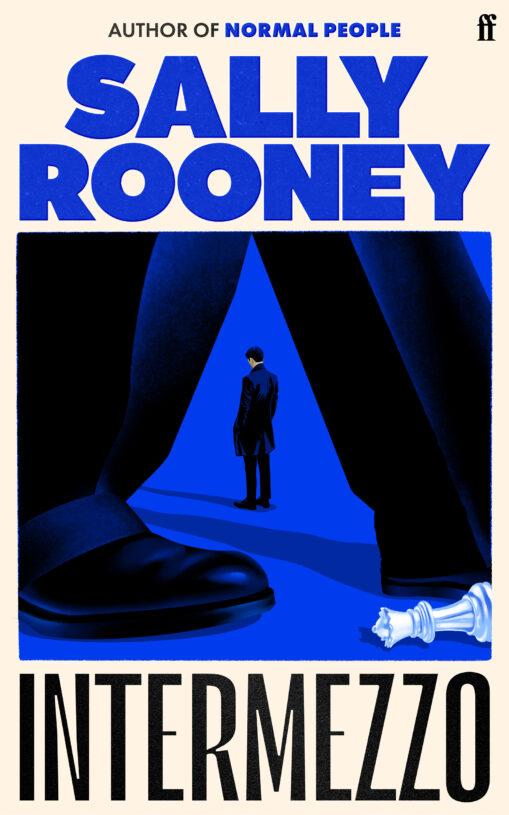
- Free Article: No
- Contents Category: Fiction
- Review Article: Yes
- Article Title: ‘Futile rage at nothing’
- Article Subtitle: Sally Rooney’s most ambitious work to date
- Online Only: No
- Custom Highlight Text:
Sally Rooney inspires large quantities of what is known these days as ‘discourse’. This dubious honour is a result of her becoming very successful at a very young age, a misfortune compounded by being cast as a generational representative. She is a ‘millennial’, apparently. Her popularity has not gone unpunished. There have been several high-profile attempts to cut her reputation down to size. She is also Irish, which has led to her being scorned as a privileged white woman, the Irish people famously knowing nothing of suffering and oppression.
- Featured Image (400px * 250px):

- Alt Tag (Featured Image): James Ley reviews ‘Intermezzo’ by Sally Rooney
- Book 1 Title: Intermezzo
- Book 1 Biblio: Faber, $34.99 pb, 442 pp
- Book 1 Cover Small (400 x 600):

- Book 1 Cover (800 x 1200):

- Book 1 Readings Link: https://www.readings.com.au/product/9780571365463/intermezzo--sally-rooney--2024--9780571365463#rac:jokjjzr6ly9m
The Marxism and Christianity of Rooney’s novels can be seen, in this sense, as expressions of an impotent idealism. They are evoked as ahistorical concepts, untainted by the grim realities of the old Soviet Union or Ireland’s scarifying history of religious oppression and vicious sectarian conflict. They can serve as philosophically vague signifiers of universal love and social justice because the world Rooney depicts is manifestly post-Marxist and post-Christian. The idealism comes pre-defeated.
The reflective melancholy and low but insistent neurotic hum of Rooney’s writing can be traced to the ennui of everyday life. She returns obsessively to the world ‘normal’. It appears scores of times across all of her novels. Her characters inhabit a contemporary world where things are indeed normal, in the sense of ordinary and unsurprising, but the smothering normality is itself destabilising. It implies an unspecified social standard, against which her characters are constantly measuring themselves, always finding themselves wanting because in reality there is no such thing as a ‘normal person’. The love-under-capitalism theme established in her first novel, Conversations with Friends (2017), is grounded in her acute awareness of the social effects of subtle and not-so-subtle gradations of wealth and prestige, the distorting consequences of which are always felt on some level, even when they are unspoken or suppressed. As Rooney observes of high-school students jostling for status in Normal People (2018), the implicit rule is that ‘everyone has to pretend not to notice that their social lives are arranged hierarchically’.
That Rooney insists on noticing such things makes her a quite traditional novelist. Allusions to classic literature – Jane Austen, George Eliot, Henry James, and, in her latest novel, Intermezzo, James Joyce – suggest the company she aspires to keep. Much of her popular appeal, one suspects, rests on her old-fashioned ability to capture the intricacies of social dynamics and intimate relationships. Her sensitive depictions of millennial mating rituals provide a contemporary gloss (you certainly won’t find a conversation about dick-pic etiquette in Austen). But the underlying form of her novels is that of the romance. They bend toward harmonious resolution, even as their conclusions insist on retaining an element of bittersweet ambiguity. There is a political implication here, too: a testing of idealism in narratives that hold out the tantalising promises of love and redemption on a personal rather than a social level.
Intermezzo finds Rooney extending these established themes, conceptually and formally. It is her most ambitious and fully realised work to date. At its centre is the relationship between rival brothers Peter and Ivan Koubek, who are grieving for their recently deceased father. The eldest by a decade, Peter is a lawyer in his early thirties, outwardly confident to the point of arrogance. He is having an affair with the freewheeling Naomi, ten years his junior, though he is still in love with his old girlfriend Sylvia, who had a serious accident at the age of twenty-five that left her in chronic pain and incapable of sustaining a sexual relationship. Ivan is a chess-playing nerd with braces on his teeth. At twenty-two, he is tall and smart and better looking than he realises, but still socially awkward, self-conscious about his ‘fundamental unsuitedness to life’ and the way his family ‘look at him as a weird unnerving person, in need of some explanatory neurological or cognitive diagnosis, which for some reason never seemed to be forthcoming’. The principal romantic relationship in the novel is the unexpected affair Ivan embarks upon with Margaret, who is thirty-six and separated from her alcoholic husband.
Set out in this way, Intermezzo might look a bit soapy. In practice, it is not like that at all. Its drama is finely observed and intensely internalised. Rooney has always been a technically proficient novelist, adroit in her ability to switch between different points of view. One of her notable achievements in Intermezzo is to have abandoned the unadventurous transatlantic prose style of her early novels. This not only instils the writing with a new descriptive richness and a euphonious Irish lilt; it allows her to craft distinct internal worlds for her three most prominent characters. Peter’s discontented thoughts are conveyed in long ruminative passages that are Joycean to the point of homage; Ivan’s interior monologues brilliantly capture his nervy self-consciousness, his odd way of being in the world; when the perspective shifts to Margaret, the tone becomes more melancholy and compassionate.
The beating heart of Intermezzo is the intelligence and sensitivity with which Rooney draws out the tensions and misunderstandings between her characters, in a way that suggests the unavoidable entanglement of their desires and insecurities. Where the novel feels a little strained is when it reaches for a deeper philosophical meaning. There is a recurring note of scepticism in Rooney’s fiction about the political significance of literature. Connell from Normal People thinks it has ‘no potential as a form of resistance to anything’. Beautiful World, the most self-reflexive of Rooney’s novels, worries that it might be ‘vulgar, decadent, even epistemologically violent, to invest energy in the trivialities of sex and friendship, when human civilisation is facing collapse’. This uncertainty manifests itself, paradoxically, as an impulse to bypass mere politics in favour of existential questioning.
The negative pole is represented in Intermezzo by Peter. ‘The meaningless lives people live,’ he thinks in a dark moment. ‘And afterwards, oblivion, forever. Futile rage at nothing. Directed one way or another, what’s the difference.’ But the orientation of Rooney’s work is away from such nihilism. She clearly means to suggest a spiritual connection between the elusive ideals of love, beauty, and goodness. In Conversations, Frances muses that to ‘love someone under capitalism you have to love everyone … Is it possible we could develop an alternative model of loving one another?’ (She adds: ‘I’m not drunk.’) Alice, the successful novelist character in Beautiful World, comes to an understanding of God as ‘the deep buried principle of goodness and love underneath everything’. Her words are closely echoed in Intermezzo by Ivan, who reflects ‘when I experience that sense of beauty, it does make me believe in God. Like there’s a meaning behind everything … to find beauty in life, maybe it’s related to right and wrong.’
Such pronouncements prompt the thought that being able to write with intelligence and sensitivity about the ‘trivialities’ of intimate relationships is quite sufficient in itself.


Comments powered by CComment